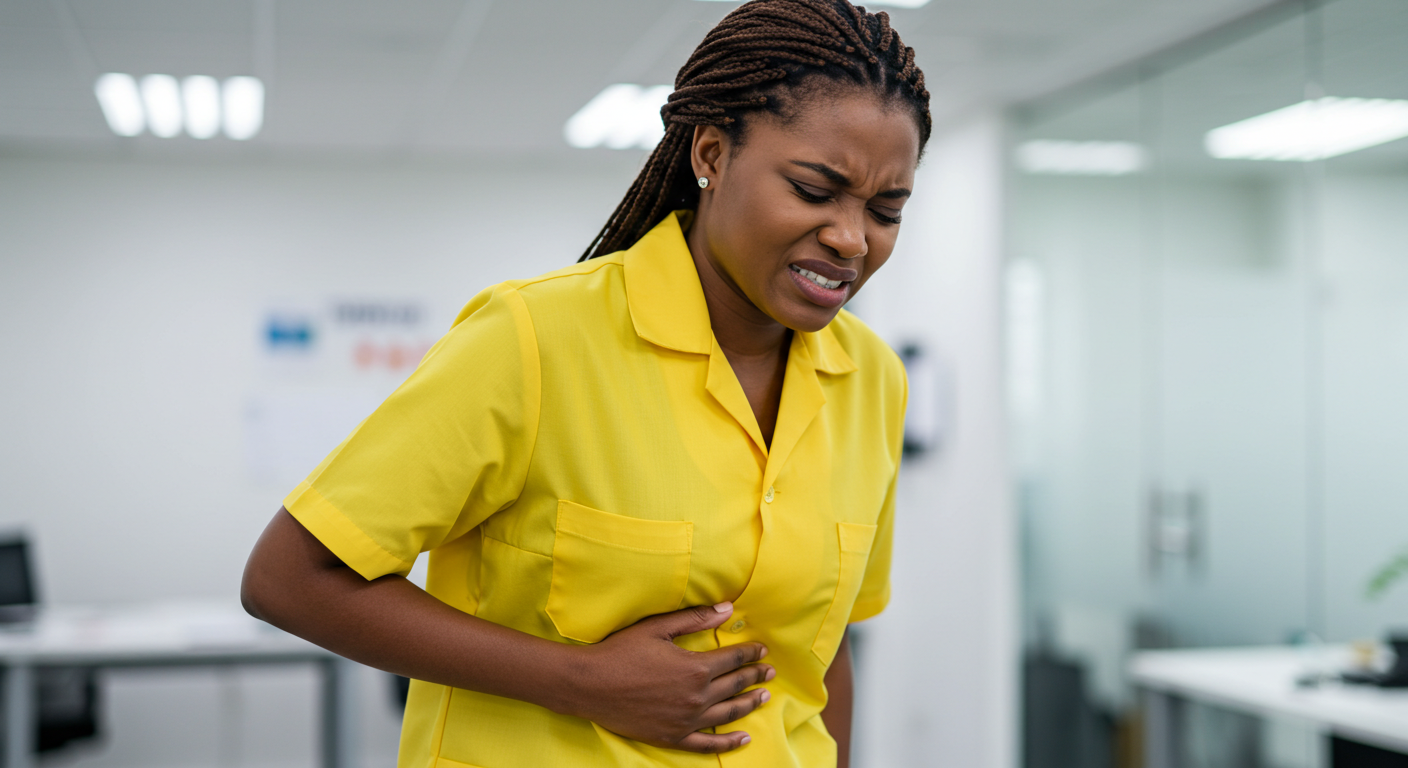
...
Ever felt a sharp twinge or a dull ache in your lower abdomen, right around the middle of your menstrual cycle? You're not alone! This sensation, often called ovulation pain or mittelschmerz (German for "middle pain"), is a common experience for many. While usually harmless, it can certainly be an uncomfortable surprise.
This guide is your global companion to understanding and gently easing ovulation discomfort using natural approaches. Let's make your cycle a little less puzzling and a lot more comfortable!
The Mid-Cycle Mystery: What is Ovulation Pain? 🤔
Ovulation is the exciting part of your cycle where an ovary releases an egg. This usually happens about 14 days before your next period, but it can vary. The pain associated with ovulation can range from a mild ache to a sharp, sudden pang, usually on one side of your lower abdomen (the side from which the egg is being released). It might last from a few minutes to a couple of days.
The exact cause isn't always clear, but theories include:
- The swelling of the follicle before the egg is released.
- The actual bursting of the follicle, which can cause a tiny amount of fluid or blood to irritate the abdominal lining.
- The muscular contractions of the fallopian tube that help move the egg along.
Soothing Strategies: Natural Remedies for Ovulation Discomfort 🌿
Ready to give your mid-cycle blues a natural boost? Here are 5-7 effective strategies to try:
1. Embrace the Warmth: Heat Therapy 🔥
How it helps: Just like with menstrual cramps, applying heat to your lower abdomen can relax the uterine and pelvic muscles, improve blood flow, and alleviate pain.
- Specifics: Use a hot water bottle, a heating pad, or take a warm bath. Apply for 15-20 minutes at a time as needed.
- Global Tip: A warm bath infused with Epsom salts can add extra muscle relaxation benefits.
2. Hydration is Key: Drink Up! 💧
How it helps: Staying well-hydrated is fundamental for overall health and can help reduce bloating and muscle cramping. Water supports proper bodily functions and circulation.
- Specifics: Aim for at least 8 glasses (around 2-3 liters) of water daily. You can also include herbal teas.
- Global Tip: Keep a water bottle handy and sip throughout the day, even if you don't feel thirsty.
3. Anti-Inflammatory Eats: Fuel Your Body Wisely 🍎🥦
How it helps: Foods rich in anti-inflammatory compounds can help reduce the body's overall inflammatory response, potentially easing pain associated with ovulation.
- Specifics:
- Omega-3 Fatty Acids: Found in fatty fish (salmon, sardines), flaxseeds, chia seeds, and walnuts.
- Leafy Green Vegetables: Spinach, kale, collard greens are packed with magnesium, which helps relax muscles.
- Ginger & Turmeric: These potent spices are known for their anti-inflammatory properties. Add them to meals or make teas.
- Avoid Processed Foods & Excessive Sugar: These can promote inflammation in the body.
- Global Tip: Incorporate local, seasonal anti-inflammatory foods. For instance, in many cultures, traditional meals often include whole grains, fresh vegetables, and beneficial spices.
4. Gentle Movement: Exercise & Stretching 🤸♀️
How it helps: Light exercise can release endorphins, which are natural pain relievers, and improve blood circulation in the pelvic area, reducing stiffness and discomfort.
- Specifics: Engage in gentle activities like walking, yoga, Pilates, or light stretching. Listen to your body and avoid anything too strenuous if you're feeling sensitive.
- Global Tip: Even a simple walk in nature can be incredibly beneficial for both body and mind.
5. Mindful Relaxation: Stress Reduction 🧘♀️
How it helps: Stress can heighten pain perception and disrupt hormonal balance. Calming your nervous system can directly impact how you experience discomfort.
- Specifics: Practice deep breathing exercises, meditation, gentle yoga, or spend time doing hobbies you enjoy. Even 10-15 minutes of mindfulness can make a difference.
- Global Tip: Different cultures have various forms of relaxation; find what resonates with you, be it quiet reflection, traditional music, or engaging in community activities.
6. Herbal Teas: Nature's Calming Brews ☕
How it helps: Certain herbal teas possess antispasmodic and calming properties that can soothe discomfort and promote relaxation.
- Specifics:
- Chamomile Tea: Known for its calming and muscle-relaxing effects.
- Ginger Tea: A powerful anti-inflammatory.
- Peppermint Tea: Can help with digestive discomfort, which sometimes accompanies ovulation pain.
- Global Tip: Explore local herbal traditions for teas that support women's health and provide pain relief. Always ensure they are safe and from reputable sources.
Prevention & Proactive Care: Lifestyle Modifications 🛡️
While ovulation itself can't be "prevented" (unless on hormonal birth control), you can manage the severity of associated pain:
1. Consistent Healthy Habits: Diet & Exercise Routines 🏋️♀️
How it helps: Maintaining a balanced diet and regular exercise routine year-round helps regulate hormones, reduces inflammation, and keeps your body strong and resilient.
- Specifics: Aim for a whole-food diet, limit processed items, and engage in moderate physical activity most days of the week, not just when symptoms arise.
2. Adequate Sleep: Rest for Resilience 😴
How it helps: Quality sleep is crucial for hormonal regulation, reducing stress, and allowing your body to repair and rejuvenate. Lack of sleep can worsen pain perception.
- Specifics: Prioritize 7-9 hours of uninterrupted sleep each night. Establish a consistent sleep schedule.
3. Track Your Cycle: Knowledge is Power 🗓️
How it helps: Understanding your unique cycle helps you anticipate ovulation pain and proactively apply remedies, rather than waiting for discomfort to set in.
- Specifics: Use a period tracking app, a calendar, or simply note down when your ovulation symptoms typically appear. This allows you to start your natural pain relief methods a day or two before the expected discomfort.
When to Consult a Professional: Important Cautions & Red Flags 🚨
While ovulation pain is generally harmless, it's vital to know when to seek medical advice:
- Severe or Debilitating Pain: If the pain is excruciating, interferes with daily activities, or doesn't respond to natural remedies or over-the-counter pain relievers.
- Unusual Symptoms: If you experience fever, chills, unusual or heavy vaginal discharge, nausea, vomiting, or pain during urination or bowel movements alongside the pain.
- Pain That Lasts Longer: If the pain persists for more than a day or two, or if it changes significantly in character or intensity.
- Pain Outside Mid-Cycle: If you're experiencing similar pain at times other than mid-cycle, it could indicate another issue.
- Excessive or Panicked Self-Treatment: While natural remedies are generally safe, avoid drastic or excessive self-treatment measures in a panic, as they could potentially cause imbalances or mask a more serious condition. For instance, consuming extremely large quantities of a single herb without guidance could be problematic. Stick to recommended doses and diversified approaches.
These could be signs of other conditions like appendicitis, ovarian cysts, endometriosis, or pelvic inflammatory disease, which require proper medical diagnosis and treatment.
By understanding your body and incorporating these natural strategies, you can navigate your ovulation phase with greater comfort and confidence. Here's to feeling more in tune with your amazing body!

What natural remedies have helped you manage ovulation discomfort?
Share your experiences and insights in the comments below – your tips could truly help someone else on their journey!